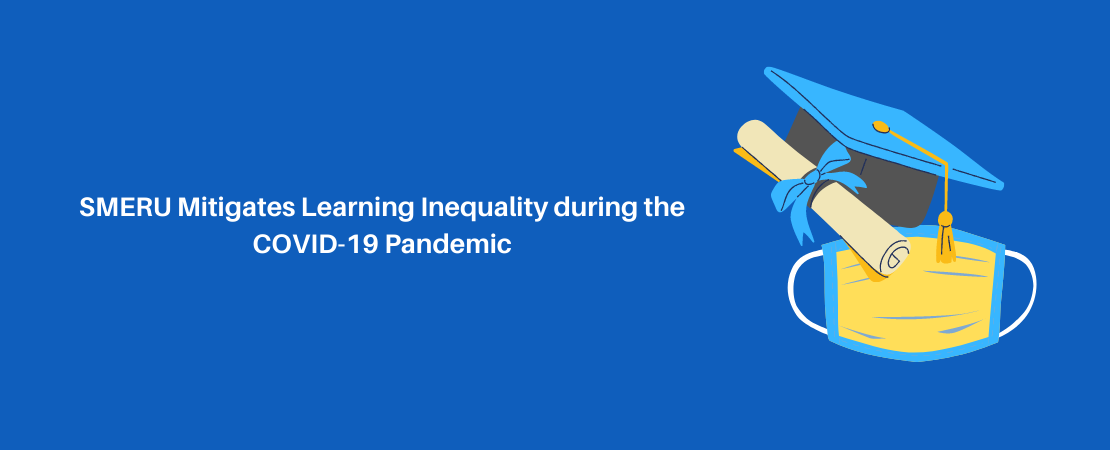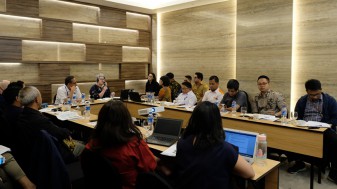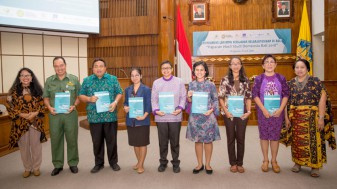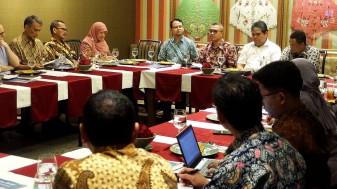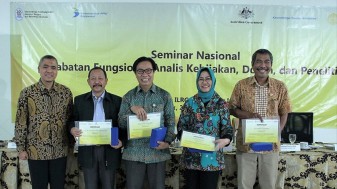Education is one of the most affected sectors by COVID-19. UNESCO noted that around 1.5 billion students in 190 countries are affected by the school closure policy during the COVID-19 pandemic. In Indonesia, the government’s decision to temporarily suspend teaching and learning activities in schools to prevent the spread of COVID-19 was carried out starting mid-March 2020. With the closing of schools, teaching and learning activities are then conducted remotely. This activity is often referred to as home-based learning (HBL). Initially, the school closure policy was to be in effect for two weeks. However, the continuously increasing transmission of COVID-19 has forced schools in many regions to continue implementing HBL. This change requires teachers and students to adapt quickly.
In practice, the implementation of HBL varies greatly depending on the capacity of teachers, schools, and student conditions at home. The variety of situations during HBL can both support and hinder the learning process. The differences in the application of HBL has led to even more unequal student learning outcomes. The government must address this situation to prevent further learning inequality. The SMERU policy research institute conducted research on learning inequality during the COVID-19 pandemic and produced several recommendations to mitigate this situation. This recommendations were later adopted by the Ministry of Education and Culture (MoEC) in the Guidelines for Implementing Curriculum in Education Units under Special Conditions (Ministerial Regulation No. 719/P/2020) as one of the measures to mitigate learning inequality during the COVID-19 pandemic.
Preliminary analysis
The SMERU research team produced a preliminary analysis to delve deeper into the implementation of HBL and its implications for inequality in student learning outcomes. In the period 15 April – 10 May 2020, SMERU conducted an online survey of teachers who had registered for the Subsidized Pre-Service Teacher Professional Education (PPG) program in the Primary School Teacher Education (PGSD) study program in 2017. Teacher competence is measured based on the pedagogical aptitude test score, one of the components in the selection test for the PPG PGSD program in 2017. Respondents with above average scores were deemed high competency teachers, while respondents with below average score were categorized as low competency teachers. Based on where the respondents live, most of the high competency teachers live in Java.
High competency teachers appear to be making greater efforts to improve the quality of learning compared to low competency teachers. In contrast, most of the low competency teachers only use one approach to teaching. Some of them have not even been teaching since the distance learning policy was implemented. This stark difference is particularly evident in regions outside Java. On Java, there is no significant difference between high competency teachers and low competency teachers in terms of effort to enrich teaching materials. Both categories took the initiative to find additional material from the internet that could be applied in learning. However, in regions outside Java, teachers with high competency tended to be more active in looking for additional teaching materials from the internet.
Most teachers try to communicate regularly with students/parents to convey learning materials and monitor the learning process. However, not all students have the opportunity to continue studying regularly in the midst of a pandemic. This occurs due to unequal access to communication devices. The cross-tabulation between ownership of communication devices and frequency of communication shows that in classes where a smaller proportion of students have communication devices, communication between teachers and students tends to be less frequent. This condition can lead to inequality in student learning outcomes because the learning process at home tends to be less effective if students do not get adequate guidance from the teacher.
The results of this preliminary study show that the negative impact of the school closure policy during the COVID-19 pandemic has been felt more by students outside Java. The negative impacts include an ineffective learning process due to limited facilities, lack of creativity, and the inability of teachers to adapt to changes that are happening today. To deepen the insight into the impact of HBL on learning inequality, SMERU also conducted a mapping of HBL practices in various regions in Indonesia during the April-June 2020 period.
Inequality in accessing quality education has actually existed since long before the pandemic. During the pandemic, as SMERU study found, HBL further widened existing inequalities. Students without adaptive teachers, access to devices with adequate features, internet access, mentoring by parents, and facilities for online learning will lose the learning opportunities they would otherwise have in a normal situation. Meanwhile, students in quality schools who are better off economically with parents who are more concerned about their learning could still learn optimally during the pandemic. If this continues, students who are in disadvantaged situation could potentially experience decreased learning abilities. The learning inequality between students of different socio-economic backgrounds will widen, as will the learning inequality between students in one class.
At the time, the emergency in the education sector had not received as much attention from the public at large as the economic impacts caused by the pandemic. Many stakeholders in the education sector are still not yet fully aware that school closures have resulted in limiting access to learning for students in disadvantaged conditions.
Influence policy
SMERU recommends more systematic efforts to improve the quality of learning from home and prepare teachers to conduct teaching by taking into account the variations in student learning abilities in their classrooms. This is important to ensure that underachieving students do not fall behind further. The research findings above also support the advocacy by the SMERU Research on Improving Systems of Education (RISE) program team in seeking to recover from the decline in student abilities when schools reopen. The SMERU RISE team demonstrates that the key to mitigating the decline in student skills is to carry out regular low-risk diagnostic assessments. This requires simplifying curriculum targets.
In its advocacy, since May 2020 SMERU has regularly involved the Ministry of Education and Culture, including the Directorate General of Teachers and Education Personnel, Special Staff to the Minister, and the Basic Education Working Group. SMERU’s advocacy was successful in informing stakeholders about the impact of school closures on declining student abilities which resulted in widening learning inequalities. On 4 August 2020, the Minister of Education and Culture issued Ministerial Decree No. 719/P/2020 concerning Guidelines for Implementing Curriculum in Educational Units under Special Conditions. This decree adopted SMERU’s recommendations regarding diagnostic assessment and curriculum simplification.
In this decree, a diagnostic assessment is used as a special assessment to identify student competencies, strengths, and weaknesses. Starting with a diagnostic assessment, the learning design can be improved and adapted to the competencies and conditions of students. Students who based on the assessment results lag in their learning outcome progress can be provided with affirmative learning assistance. The assessment shall be carried out based on several principles, including validity, reliability, fairness, flexibility, authenticity, and integration. The policy document further elaborates the details regarding the assessment implementation. SMERU’s recommendations that were adopted in Ministerial Decree No. 719/P/2020 regarding this diagnostic assessment method were then shared by the Ministry of Education and Culture in public events. The aspects of curriculum simplification are independently listed in the guidelines for implementing the curriculum under these special conditions.
Knowledge Sector Initiative (KSI) contribution
Since May 2020, SMERU has utilized funds from KSI to conduct a study on the impact of the pandemic on teaching and learning inequality and advocate the recommendations. In preparing the study, SMERU involved the Research and Development unit of the Ministry of Education and Culture and the Directorate of Education and Religion of the Ministry of National Development Planning/Bappenas. In July 2020, SMERU produced a short report entitled “Home-based Learning: A Portrait of Learning Inequality during the COVID-19 Pandemic” which details the ways by which the assessments were carried out in various schools and regions. With KSI’s support, SMERU also enriched the discourse on efforts to anticipate learning inequality by organizing a webinar entitled “Home-based Learning: Challenges and Strategies for Overcoming Learning Inequality During the #Covid19 Pandemic”. SMERU delivered its recommendations in the webinar which was attended by the Director General of Teachers and Education Personnel of the Ministry of Education and Culture as well as teacher representatives from Enrekang District, South Sulawesi.

